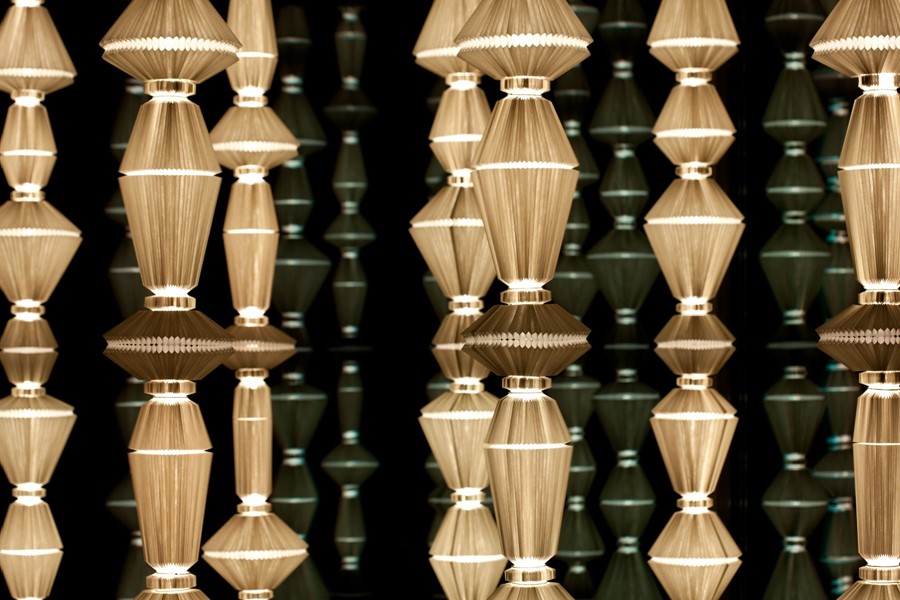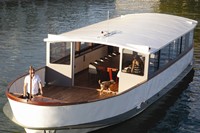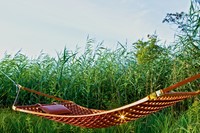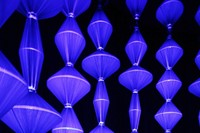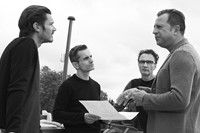Be it from their modernist motel headquarters or their repurposed river boat, design agency atelier oï are creating extraordinary confections around the world
The Swiss-based design agency atelier oï may have been formed in 1991 and worked with clientele ranging from Louis Vuitton, Hermes, Bulgari and Pringle of Scotland, but they still approach each new project with the unbridled enthusiasm of the novice. Says Patrick Reymond, who makes up one third of the founding troika (alongside Armand Louis and Aurel Aebi), “We are naturally curious people so whatever techniques we can use to create something new, we will try!” Together, they've conceived and fabricated a folding stool and hammock in luxurious leather for Vuitton’s “objets du voyage” collection, “Oiphorique” vibrant light sculptures for Bulgari and a bird house made of seeds that changes shape over time before finally disappearing entirely. Such a free-ranging multidisciplinary approach to design is evidence of their commitment to making things people haven't seen before. For the trio, “the individual is not important, nor the ego, but the idea and the end result and the materials are the hero. We do not want to be defined by the particular style of our end result; it is our process that defines us.”
Formed when Aurel and Reymond were at university together studying architecture and design, it was only when Louis joined with a background in boat construction, that a “chemical reaction” formed. Indeed “oï” is derived from the Russian word for “troika” – “We liked the imagery it conjures of a travelling vehicle, and this is reminiscent of the way that we see ourselves as travellers, almost adventurers, discovering new materials and ways of creating,” notes Reymond. “There being three of us is so important to our shared approach. With just two people there can be an agreement or a disagreement; with three people there will always be a discussion, always a different view.”
"We do not want to be defined by the particular style of our end result; it is our process that defines us” — atelier oï
Since 2009, they have been operating out of the sprawling “Moïtel” – a renovated former motel in idyllic La Neuveville, Switzerland. Housing their archive, materials library and prototypes, the “Moïtel” functions as half science lab, half art studio where past projects are given the opportunity to live on and influence new works in progress. “The Moïtel is different from a standard architects office in that everyone there is in direct contact and feels connected to the materials at all times. This allows us to stand back from the work and take a different perspective and view, which lets us see things in a different way,” notes Raymond. Surrounded by a great lake and nature, the trio have been known to take clients out onto the water on the ‘Romandie I, 1952’ – their luxurious interpretation of a former passenger cabin. Agrees Raymond, “The boat is a huge aid to our creative process. It is important to take time in another world, and journeying on the water gives you this experience.”
Such a unique, outsider perspective is also borne out in their recent commission by the venerated Scottish knitwear brand, Pringle of Scotland, to redefine a new design line for their boutiques, starting with a new store on Mount Street. Working on the project highlighted some surprising similarities, “Well, they play with noble materials such as cashmere, the way we try to do in design and architecture, and they look to their archives and heritage techniques but also innovate through learning from this past.” Inspired by the brand’s Scottish heritage, they chose natural rugged materials like wood and stone “to reflect the authenticity and harmony of Scottish natural landscapes and we tried to work on them with a contemporary attitude in the same way that Pringle does.” Pringle’s signature Argyle pattern was also reimagined in metalwork on lamps and shelves. For the itinerant dreamers of atelier oï, the project has awakened a wanderlust in them: “We were all really inspired by discovering the landscapes of Scotland when working with Pringle; the materials we used and beauty of the nature, the closeness to nature you feel in Scotland. This discovery has made us really keen to work on something in Scotland next, continue our adventures there.”
Text by Kin Woo
